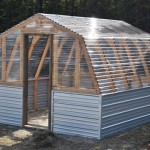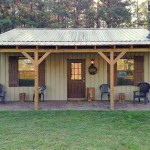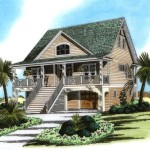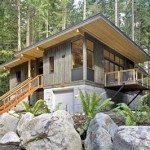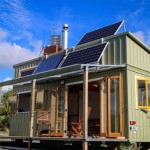Shotgun House Plans: A Guide to Design and Functionality
The shotgun house, a distinctive architectural style originating in the American South, is characterized by its long, narrow layout with rooms arranged in a single file. This unique design, born out of necessity and resourcefulness, has gained popularity in recent years for its charm, affordability, and efficient use of space. This article will delve into the essential features, design considerations, and functionality of shotgun house plans, providing a comprehensive guide for those interested in this architectural style.
Understanding the Shotgun House Concept
The term "shotgun" refers to the straight, narrow passageway through the house, where a single shot fired from the front door would travel through each room without interruption. This simple and direct layout, often with a single hallway leading from the front to the back, distinguishes the shotgun house from other architectural styles. The origins of the shotgun house can be traced back to the 19th century, specifically in the post-Civil War era. African American communities in the South, facing limited resources and discrimination, adapted this efficient design for affordable housing.
Shotgun houses were typically built with wood framing and simple materials, reflecting the limited financial resources of the time. They were often raised on piers or brick foundations for better ventilation and protection against moisture and insects. The narrow width of the house, usually between 12 and 20 feet, allowed for efficient use of land and maximized natural light from the front and back entrances.
Key Considerations for Designing a Shotgun House
While the traditional shotgun house design offers simplicity and efficiency, modern interpretations of this style allow for personalization and contemporary features. However, several key considerations remain crucial in designing a shotgun house plan:
1. Layout and Flow:
The linear layout of a shotgun house emphasizes a smooth flow of movement, often utilizing a central hallway that connects the rooms. Open floor plans, eliminating unnecessary walls, enhance the sense of spaciousness and connectivity. This open layout also facilitates natural light penetration throughout the house, maximizing the use of daylighting. The number of rooms can vary depending on the size and needs of the homeowner, but typical shotgun houses feature a living room, dining room, kitchen, and bedrooms arranged in a single file.
2. Functionality and Space Optimization:
The design of a shotgun house is inherently focused on maximizing functionality in a limited space. This involves careful planning of furniture placement, storage solutions, and multi-functional areas. For instance, a living room may double as a guest room, or a kitchen might integrate a dining area to enhance the flow of space. Incorporating built-in shelves, cabinets, and cleverly designed furniture maximizes storage capacity within the narrow footprint of the house.
3. Sustainability and Energy Efficiency:
The narrow width of a shotgun house naturally promotes cross-ventilation, a key aspect of passive cooling for hot climates. This feature, combined with the use of natural light and energy-efficient materials, makes shotgun houses inherently sustainable and energy-efficient. Strategically placed windows and skylights can optimize solar gain during winter months and minimize heat gain during summer.
Functionality of Shotgun House Plans
Shotgun houses, despite their compact size, offer several advantages in terms of functionality and livability:
1. Efficient Use of Space:
The linear design of a shotgun house optimizes the use of space by eliminating unnecessary hallways and large rooms. This compact layout provides a cozy and intimate atmosphere, ideal for small families or individuals who value efficiency and simplicity.
2. Natural Light and Ventilation:
The open layout, with a single hallway connecting rooms, facilitates natural light penetration throughout the house. The front and back entrances also allow for cross-ventilation, promoting air circulation and creating a comfortable indoor environment.
3. Affordability and Flexibility:
The relatively simple design and construction of a shotgun house contribute to its affordability, making it an attractive option for budget-conscious homeowners. The flexibility of the layout allows for adaptation to different needs and lifestyles. For example, the living room can be converted into a home office or a guest room, accommodating changing priorities.
4. Community and Connection:
The history of shotgun houses is deeply intertwined with community and neighborliness. The close proximity of these houses often fostered a sense of kinship and shared experiences, creating a strong sense of community. This aspect remains a key attraction for those seeking a close-knit living environment.
Conclusion
Shotgun house plans offer a unique and often overlooked architectural style that combines efficiency, functionality, and charm. From their historical roots in the American South to their modern adaptations, these homes continue to captivate with their simple beauty and practicality. By understanding the essential considerations for design and functionality, homeowners can embrace the distinctive layout and embrace the spirit of this iconic architectural style.

Free Editable Shotgun House Plans Edrawmax Online

Free Editable Shotgun House Plans Edrawmax Online

Free Editable Shotgun House Plans Edrawmax Online

Free Editable Shotgun House Plans Edrawmax Online

Job 22344 B Shotgun House

Free Editable Shotgun House Plans Edrawmax Online

Country Style House Plan 6975 Jane

Farmhouse Style House Plan 9 Beds 6 Baths 4743 Sq Ft 430 373 Dreamhomesource Com

House Plan 117 8 29 X 49 14 9 7 Country Ranch Architectural Essential Information Pack Includes Copyright Licence Design Etsy
Farmhouse Style House Plan 3 Beds 2 5 Baths 2063 Sq Ft 901 136 Houseplans Com
Related Posts


